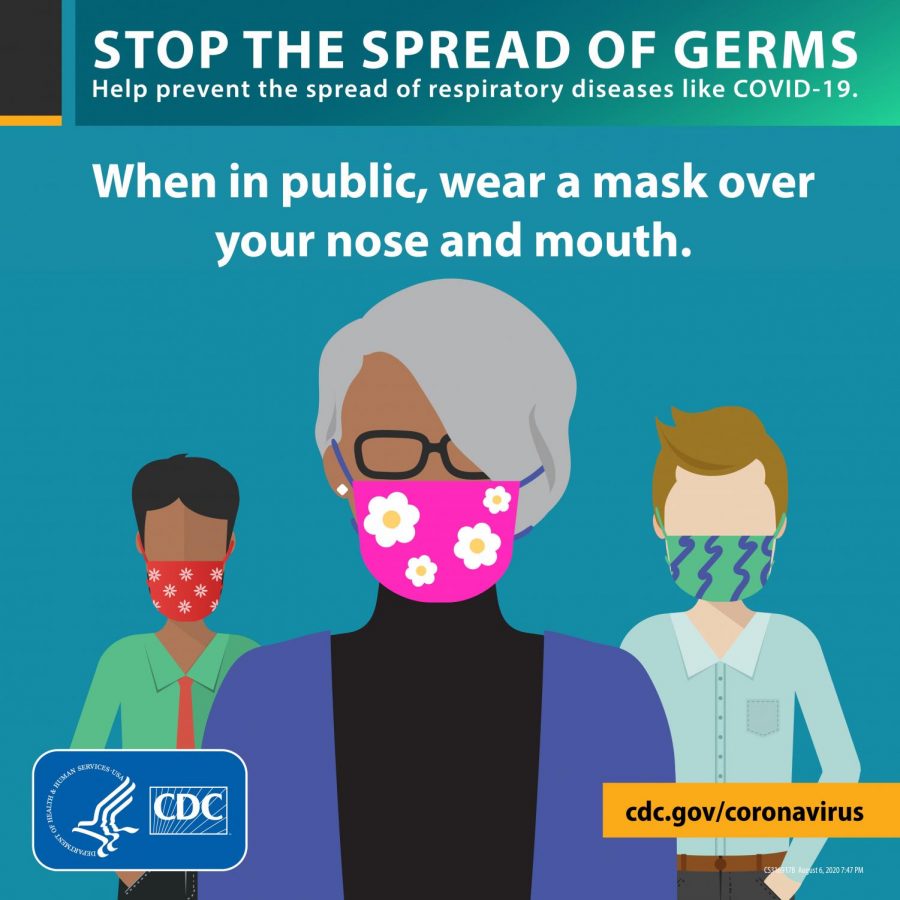Opinion: Are you young and healthy? Congratulations, but the coronavirus doesn’t care.
Wearing a mask can help prevent the spread of COVID-19.
October 30, 2020
After taking the PSAT/NMSQT at Central, I’ve witnessed firsthand just how seriously young people are taking COVID-19, which is to say, not much at all. Students got out of their cars, and, without any recollection of a global pandemic, went in for a hug with the first buddy they saw. During bathroom breaks and even in testing rooms, people were lowering their masks and letting their noses hang out in the open.
I get that people are tired, but we’ve got to stay vigilant.
Now, before I dispel the plethora of swirling myths that give so many of us a false sense of invulnerability, let’s start with what you should already know.
COVID-19 generally spreads through respiratory droplets that exit a carrier’s airways. If inhaled due to close proximity, those droplets can infect an individual provided the viral load is large enough. Just a few hundred virus particles are enough to cause infection, and just a couple minutes of talking might spew out millions of virus particles. Touching a contaminated surface then touching your face is also a way you might be infected.
COVID-19’s R0, or reproduction number, varies widely based on individual circumstances, but, based on which study is looked at, generally ranges from 2.2-6.5. This means that an infected patient will on average spread the virus to more than one person. Mathematically speaking, virus cases would follow a pattern of exponential growth, which SARS-CoV-2 largely has. This kind of growth, if left unchecked, would end up infecting everyone. That’s not a good thing, as I’ll explain shortly.
The virus also spreads asymptomatically, meaning that even if you exhibit no symptoms but carry the virus, it will spread to other people.
There is no vaccine and no cure for the virus. Current drugs used for treatment are not catch-all cures, and only stop the most severe of responses. There is not enough data to show substantial effectiveness of these drugs, or that they don’t have serious side effects.
These four key details about the virus should be enough to convince you to wear a mask and keep six feet away from others, but evidently, it’s not enough for everyone.. So, let’s see what other tricks COVID-19 has up its sleeve.
It’s common knowledge that the elderly are very susceptible to catching and dying from the virus, but adolescents can also be severely affected. Kids aged 2-15 can develop multi-system inflammatory syndrome leading to life-threatening and long term damage. Data also shows that 40% of COVID patients will develop acute respiratory damage syndrome (ARDS), which can likely cause permanent lung damage.
Maybe you’re among those who are comfortable with the portion of patients who develop nasty after effects as unavoidable collateral damage along the way to herd immunity, but not so fast. You can get reinfected with SARS-CoV-2, for a variety of reasons. There are multiple strains of the virus, it can mutate quite rapidly and, for some unknown reason, some patients whose immune response blows through the virus develop little immunity, even if they test positive for antibodies. Getting reinfected leads to long-term damage to organs and tissues as well.
There’s a lot we don’t know about this new virus. That gives us all the more reason to assume the worst and be extra careful. You should go about your normal life, but don’t ignore the existence of this deadly pathogen. We can only get through this pandemic if everyone does their part. None of us is invincible, and the more invincible you act, the more susceptible we all truly are.








